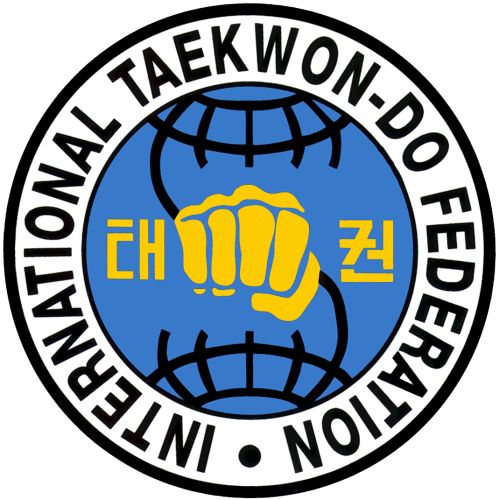 BIRMINGHAM TAEKWON-DO, FOX HOLLIES LEISURE CENTRE
BIRMINGHAM TAEKWON-DO, FOX HOLLIES LEISURE CENTRE

Tae Kwon-Do is the Korean art of self-defence created by General Choi Hong Hi.
It aims at a noble rearmanent, high degree of intellectual achievement, graceful techniques, formidale power and beauty of physical form; therefore, it can be consdered as a part of one's daily life, just as are breathing and thinking.
The utmost purpose of TaeKwon-Do is to eliminate fighting by discouraging the stronger's oppression of the weaker- a power that must be based on humanity,justice, morality, wisdom and faith, thus helping build a better and more peaceful world.
TaeKwon-Do is also known as one of the best means of developing and enhancing the emotional, perceptual, and psychogical characteristics that enable the younger generation, regardless of age, social status, sex, to effectively learn and participate demands of his peers in the social play.
TaeKwon-Do emphasize not only a strict self imposed discipline along with the spirit of cooperation and mutual respect but also teaches patience and resolve to overcome difficulty.
Sine Wave Motions are hard to grasp for lay Tae Kwon-Do practitioners. Understanding, Practising and Mastery of these power developing motions can only be sought from education and training with ITF Grand Masters, Masters and International Instructors teaching and promoting these principles.
The contrast between Sine wave motions taught practicitoner and Chiral motion practiioner is huge. The contrast in relaxed performance with accentuated movements of beauty and powerful technique is very apparent. The central torso can be seen to play an important part of natural accentuated movements.
Chiral motion taught practioners are linear, zig-zag and angular in performance. Chiral motion can be still appreciated and seen in traditional Karate movements. For example, Shotokan. Original Tae Kwon-Do derived from Karate methods of developing power stayed that way for a while.
more discussoin within forum....
A sinewave with execution of a single technique with no accentuation. An exhailation of a sharp explosive breath to wards the end of the sinewave cycle. Typical early start of ITF exercises and pattern training. For example, Saju-Magki, Saju-Jurigi and 19 movements of pattern Chon-ji. There are no slow, fast, continuous, connecting or consecutive motion to this pattern.
For those still practising Orignal and claims of Orignal Tae Kwon-Do practice of Tae Kwon-Do are dated in the pre 1980s curriculumn. Some find it impossible and blame difficulty with such practice. Mostly outside of the ITF and out of touch with the Grandmaster and Masters of ITF. However, those still practicing Tae Kwon-Do with General Choi succeed in understanding the ITF Sinewave developments. The transiton of Tae Kwon-Do from origins and roots of Shotokan evolved from the late 1950's.
The contrast is shocking but some will not embrace changes others will continue to apply and excute outdated applications of movements and patterns in the Original Tae Kwon-Do way (No Sinewave motions).
Some will forego patterns altogether but only emphasize sparring aspects of Tae Kwon-Do. General Choi would term this as errosion of the full Tae Kwon-Do currriculum as he founded, developed, promoted and practiced. ITF sparring is a no-contact martial art.
more disscussion within forum....
Slow motion implies self-control and development of controlling Tae Kwon-Do techniques. ITF Tae Kwon-Do students will be aware of this when learning how to excute and express certain pattern movements in Joong-Gun.
The Sine Wave cycle is controlled and executed with slow exhailing and execution of the technique.
This slow motion can be seen and is applied to movement 27, 29 and 30 of this pattern. This pattern has normal, fast and slow motion sinewave motions. There are no connecting, continuous, consecutive motions in this pattern.
Toi-Gae, Kwang Gae, Po-Eun, Eui-Am, Choong-Jang, Juche, Yoo-sin, Yon-Gae, Moon-Moo, Se-Jong and finally Tong-il have slow motions techniques.
more discussion within forum....
Fast Motion where there are two Sine waves with two techniques executed with a single count and two breaths. There is no downward follow-on between execution of the two techniques. The second technique not finishing its full Sine wave cycle. Effeectively delivering two techniques with two exhailing breaths. The essence is speed and power. It is accentuated and focused on speed of delivery. The co-ordinated hip twist at the apex between Sine wave. Between first Sine wave cycle to second Sine wave cycle.
This is very apparent and practised by ITF education and trainng methods. For example pattern Do-San, Yul-Gok, Joong-Gun, Hwa-Rang, Choong-Moo, Gae-Beak, Choong-Jang, Yoo-Sin, Choi-Yong, Ul-Ji, So-San and Tong-il.
more discussion within forum....
Continuous motion, 2 technique, 2 sine waves and a single continuous breath.
more discussion within forum....
Connecting motion, this involves 2 techniques and a single sine wave and a single breath. This single breath accentuates the two techniques one after the other in a single sine wave.
more discussion within forum....
Consecutive motion,
more discussion within forum....
Promote your company here, we market your company on the internet. Ask for our marketing rates!
